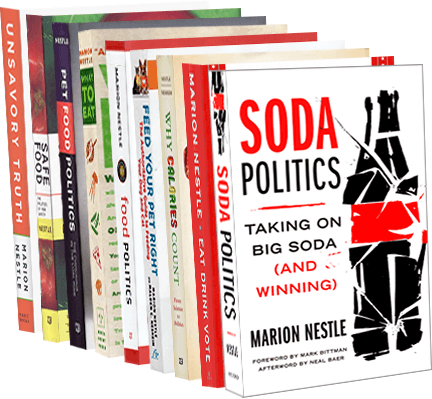Academe, the journal of the American Association of University Professors, devotes its current issue to corporate and professorial conflicts of interest.
I’m interviewed in this issue, in a Q and A with Academe editor Cat Warren: Big Food, Big Agra, and the Research University.
Guest editor Sheldon Krimsky explains that:
In this special issue, a group of internationally respected academics, science journalists, and other experts tackle what have become some of the thorniest issues facing higher education: corporate conflicts of interest, the chilling of scientific speech and academic freedom, and the urgent need to protect the integrity of scientific research.
Here’s what’s in the rest of the issue—nothing more about food, but plenty that is relevant to the ethical and corporate issues I often discuss on this site :
“Kneecapping” Academic Freedom: Corporate attacks on law school clinics are escalating.
Robert R. Kuehn and Peter A. Joy, law professors, Washington University in St. Louis
The Costs of a Climate of Fear: Ideological attacks on scientists undermine sound public policy.
Michael Halpern, program manager, Union of Concerned Scientists
BP, Corporate R&D, and the University: New lessons for research universities, thanks to a catastrophe.
Russ Lea, vice president for research, University of South Alabama
When Research Turns to Sludge: Tying strings to sludge is not as hard as it sounds.
Steve Wing, epidemiologist, University of North Carolina at Chapel Hill
A Not-So-Slippery Slope: Rejecting tobacco funding isn’t rocket science. It’s basic ethics.
Allan M. Brandt , historian and dean of the Graduate School of Arts and Sciences, Harvard University
The Historians of Industry: What happens when historians enter the courtroom? Mostly, industry rules.
Gerald Markowitz, historian, City University of New York, and David Rosner, historian, Columbia University
Hubris in Grantland: Languor and laissez-faire greet conflict of interest at the NIH.
Daniel S. Greenberg, science journalist
The Moral Education of Journal Editors: Disclosure is a necessary first step toward scientific integrity.
Sheldon Krimsky, urban and environmental policy and planning professor, Tufts University
Diagnosing Conflict-of-Interest Disorder: How Big Pharma helps write the Diagnostic and Statistical Manual of Mental Disorders.
Lisa Cosgrove, clinical psychologist, University of Massachusetts Boston, and residential research fellow, Edmond J. Safra Center for Ethics, Harvard University
The Canadian Corporate-Academic Complex: The unhealthy collaboration of corporate funders and university administrators.
James Turk, executive director, Canadian Association of University Professors




